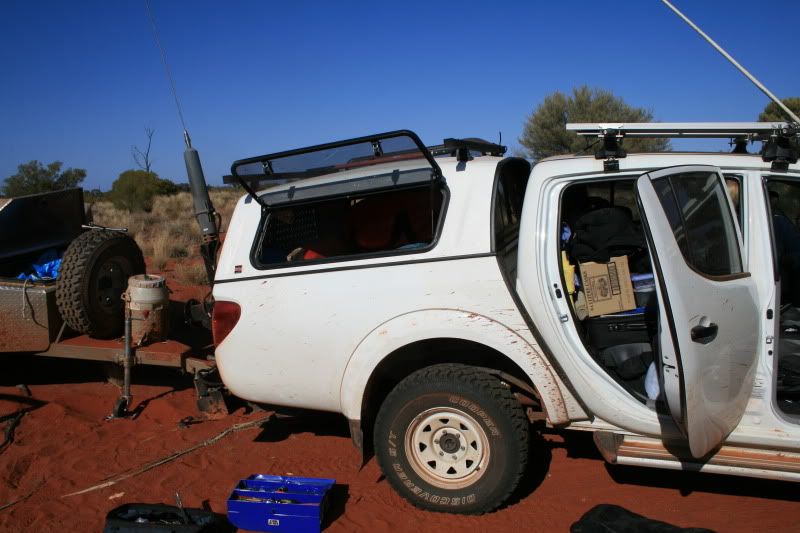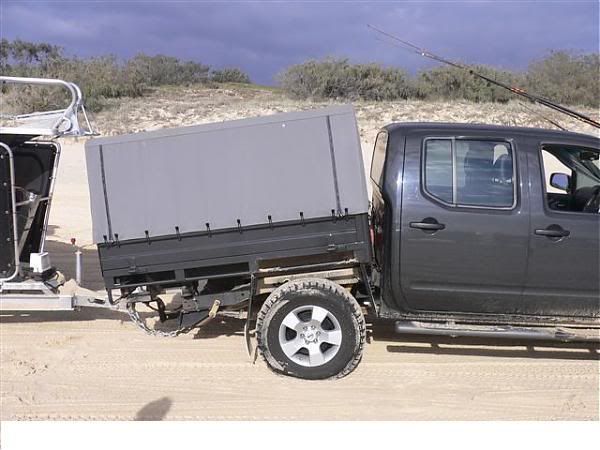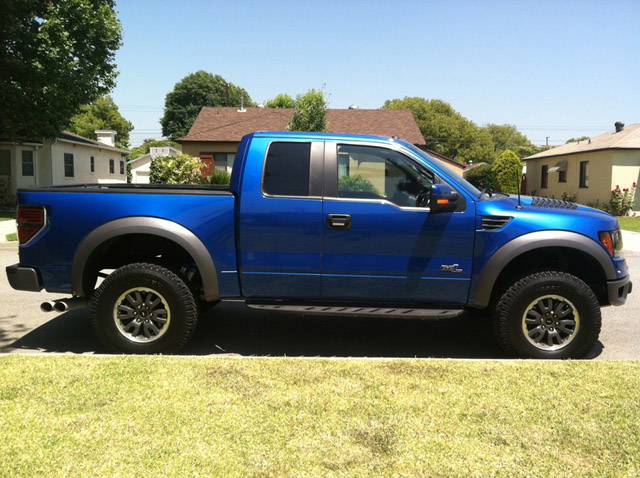Airbags are set at 30psi suspension is ARB HD leaf pack with greasable shackles. Tub has been removed and replaced with mid strength alloy traywith alloy tube frame with canvas cover. (weight saving of about 300kg over tub) Chassis has a weakened area (chassis flex point between cab and tub) located at the top of the rear wheel arch rise where the foreward tub mounting bracket is located. My chassis bent upwards at this point and was first noticed when the canopy cab gap was seen to be widened. Bend was in the order of 7 deg which was achieved by the vertical walls of the chassis at this point bending outwards (chassis walls became oval). As for other brands, there is a Toyota cab chassi in the next camp site to me in Kalgoorlie and the wall thickness is in the order of 4 to 5mm visualy it appears much stronger and has no weakened/flex areas. Simply looking at a Navara chassis is enough to tell me it is not up to the task. Some good news, the firm who repaired my ute the first time have agreed to straighten and reinforce the chassis (chassis will be plated on vertical walls for a distance of 8 inches both sides of the problem area which should both strengthen the chassis and prevent the verticle walls from bowing out, horizontal walls cannot bow out as they are under compression (bottom) and tension (top)forces in this area) for no cost so I may not have to scrap it might trade it in for a Toyota. Nissan has a bad name in Kalgoorlie as there have been a lot of problems with chassis bending and towbars (even Nissan genuine bars) sperating from the chassis. This is primarily with Utes used in the mining industry so they get a bit of a working over but it is noticable that opinion is almost universal that the Nissan chassis are too weak. Same folks have commented on the problems associated with airbags on nissan and other utes causing compression of the chassis rails where the bags are bolted to the chassis (this has not been a problem on my ute) and a common thread seems to be over inflating the bags to level the vehicle when loaded. Pressures of around 90 psi are not uncommon.
My D40 has ARB suspension, airbagman bags, steel wheels with Cooper ST, rear airlocker, power chip, 4 inch exhaust pipe with Particle filter removed (replaced with section that mounts all Nissan sensors fooling the engine management system into thinking the particle filter is still there and working. Tub has been replaced with alloy tray. Nissan towbar, Nissan bullbar with winch, ARB under body protection (new line from ARB and very strong) UHF, sat nav, EVA COOL fridge behind driver seat. In a box on the tray is compressor, second battery and management system (battery management system connects to camper via anderson plug and talks to the management system in the camper accepting and distributings power from alternator and/or the solar panels on the camper.
So you can see that I have spent a lot on this ute which increases the diapointment that I have been let down by a very weak chassis, something I could not have anticipated.


































